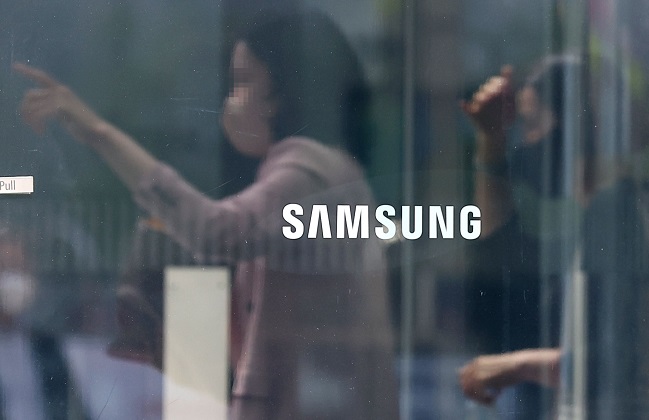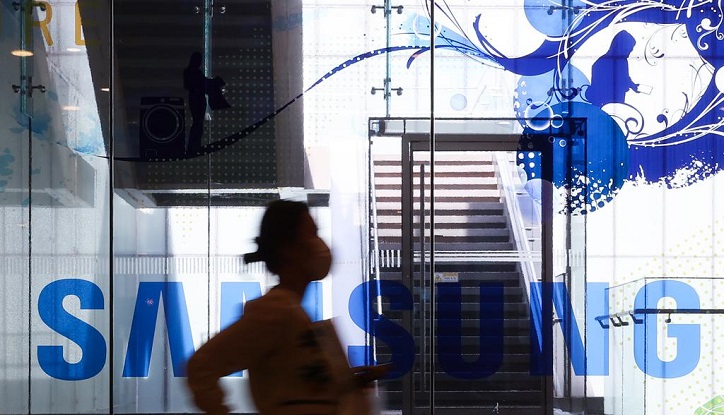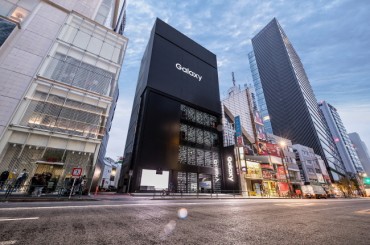
This photo taken on July 7, 2022, shows Samsung Electronics’ office building in Seocho, southern Seoul. (Yonhap)
SEOUL, Oct. 27 (Korea Bizwire) — Samsung Electronics Co. on Thursday posted a sharp drop in profits for the third quarter, as its main semiconductor business faced major headwinds from weakening memory chip prices and demand.
The world’s largest memory chip and mobile phone maker said in a regulatory filing its third-quarter net profit declined 23.6 percent from a year earlier to 9.38 trillion won (US$6.6 billion).
Its operating profit for the July-September period fell 31.4 percent on-year to 10.85 trillion won.
Revenue increased 3.8 percent to 76.78 trillion won, a record for a third quarter.
The semiconductor division, the heart of Samsung’s businesses that accounted for nearly 70 percent of its total profit in the previous quarter, slumped nearly 50 percent on-year to 5.12 trillion won, as weakened consumer spending power led to a cut in demand for chips from electronics makers, as well as cloud computing and server companies.
“Customers’ inventory adjustments exceeded market expectations and demand for consumer products continued to weaken,” Samsung said.
But its foundry, or contract chip manufacturing, business posted record quarterly sales and operating profit on “improving yields in advanced nodes,” the company said in a statement, without providing exact numbers.
Samsung said its mobile business posted an operating profit of 3.24 trillion won, up from 2.62 trillion won on-quarter on sales of flagship products, including foldables, as well as new wearables, but the figure was slightly down from last year’s 3.36 trillion won.
Samsung’s display panel business logged solid performance on growing demand following the release of new flagship smartphones, but its large panel business posted losses on slowing TV and PC monitor sales.

Pedestrians are reflected on the glass door of Samsung’s office building in Seocho, southern Seoul, in this file photo taken May 24, 2022. (Yonhap)
Despite weaker demand, the company stood by its previous position that it would not cut back on chip production.
At an earnings call Thursday morning, Han Jin-man, executive vice president and head of the memory global sales and marketing at Samsung Electronics, reiterated that the company is not considering a cut in production of DRAM and NAND flash products.
DRAM, or dynamic random-access memory, is a type of volatile semiconductor memory that retains data as long as power is supplied. It is commonly used in personal computers, workstations and servers.
NAND flash is a type of non-volatile storage that does not require power to store data.
“Even though we agree that the current market demand is contracted, if we think at a strategical level, we do see that there is a need for us to be prepared for demand recovery from a mid-to-long term perspective,” Han said.
“Looking towards next year, there are plans for increase of server data centers, and we do expect there to be a greater adoption of DDR5 coupled with a new CPU,” which will boost chip demand, he said, while remaining cautious of “any rapid changes in the market situation.”
DDR5 is the next-generation standard for DRAM.
Previously, SK hynix Inc. and Micron Technology, two other major memory chip makers, said they would cut capital spending by up to 50 percent next year to respond to slowing demand.
The global chip industry has entered a cyclical downturn, which has been exacerbated by key macro events around the world.

A woman walks past the Samsung logo on the glass wall of Samsung D’light shop in Seocho, southern Seoul, in this file photo. (Yonhap)
Major economies aggressively increased borrowing rates to tackle rising inflation, and the war between Russia and Ukraine continued to keep raw materials and commodity prices at elevated levels.
The pandemic-led boom in electronics devices and home appliances has now all but fizzled out.
Adding to the woes, memory chip prices began to fall in the fourth quarter of last year as semiconductor buyers and chipmakers have moved to adjust their inventories, according to research firm TrendForce.
DRAM prices are estimated to have posted a quarterly decline of 10-15 percent in the third quarter.
TrendForce projected a dismal outlook for the coming months, with DRAM prices likely to further decline 13-18 percent and NAND flash to drop 15-20 percent in the fourth quarter.
“DRAM and NAND flash look to be greatly oversupplied in each quarter and inventory pressure will continue to accelerate in 1H23,” it said.
While the tech giant said geopolitical uncertainties are likely to dampen demand to some degree in the first half, it expressed cautious optimism that the chip cycle will bottom out and demand could start to recover late next year, helped by data centers and arrival of new applications.
Samsung Electronics shares inched up 0.17 percent to close at 59,500 won Thursday, versus the wider market’s 1.74 percent gain.
(Yonhap)






